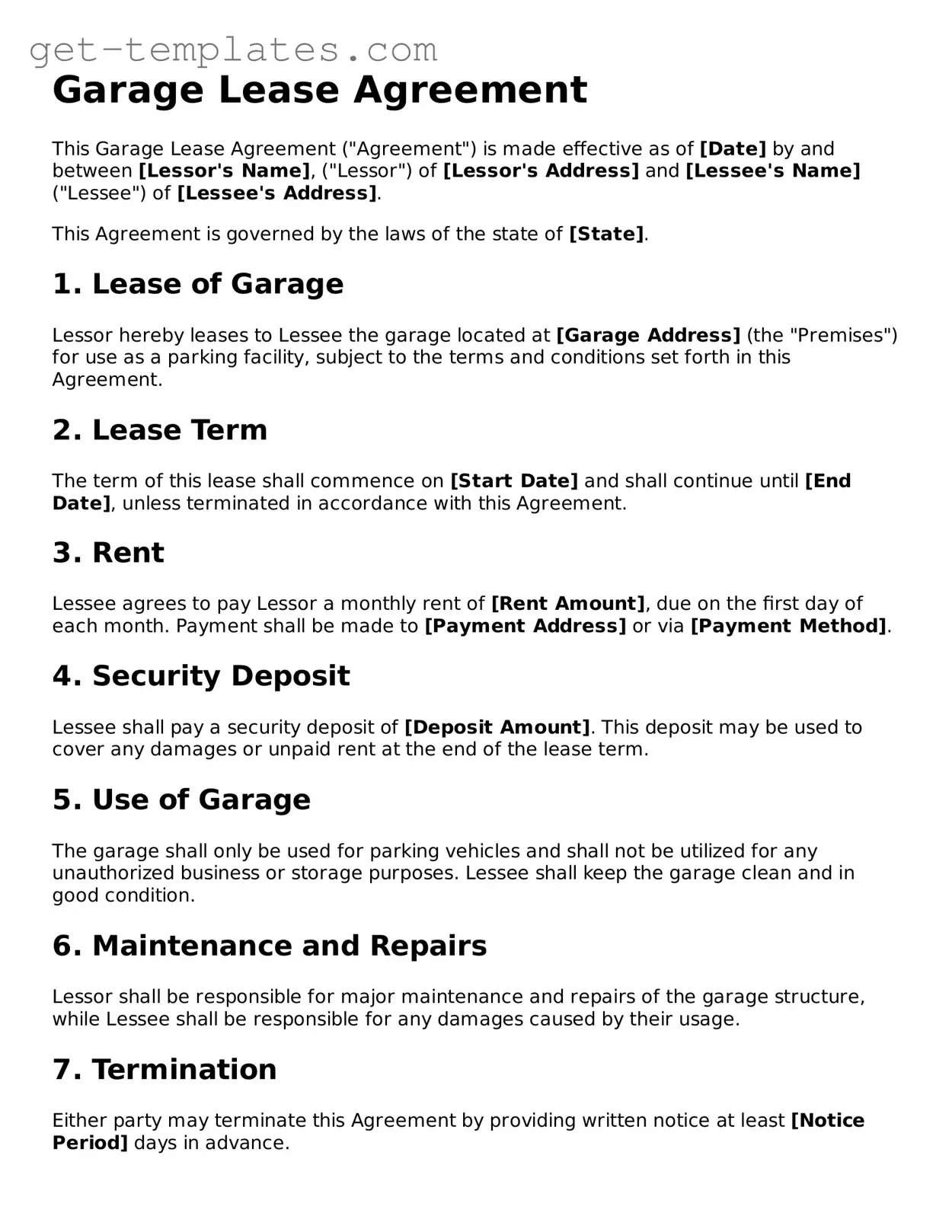Garage Lease Agreement
This Garage Lease Agreement ("Agreement") is made effective as of [Date] by and between [Lessor's Name], ("Lessor") of [Lessor's Address] and [Lessee's Name] ("Lessee") of [Lessee's Address].
This Agreement is governed by the laws of the state of [State].
1. Lease of Garage
Lessor hereby leases to Lessee the garage located at [Garage Address] (the "Premises") for use as a parking facility, subject to the terms and conditions set forth in this Agreement.
2. Lease Term
The term of this lease shall commence on [Start Date] and shall continue until [End Date], unless terminated in accordance with this Agreement.
3. Rent
Lessee agrees to pay Lessor a monthly rent of [Rent Amount], due on the first day of each month. Payment shall be made to [Payment Address] or via [Payment Method].
4. Security Deposit
Lessee shall pay a security deposit of [Deposit Amount]. This deposit may be used to cover any damages or unpaid rent at the end of the lease term.
5. Use of Garage
The garage shall only be used for parking vehicles and shall not be utilized for any unauthorized business or storage purposes. Lessee shall keep the garage clean and in good condition.
6. Maintenance and Repairs
Lessor shall be responsible for major maintenance and repairs of the garage structure, while Lessee shall be responsible for any damages caused by their usage.
7. Termination
Either party may terminate this Agreement by providing written notice at least [Notice Period] days in advance.
8. Governing Law
This Agreement shall be interpreted according to the laws of [State], which governs all aspects of this lease.
9. Additional Provisions
- Any amendments to this Agreement must be in writing and signed by both parties.
- Lessee shall maintain insurance for their vehicle while parked in the garage.
- Neither party shall be liable for any damage or loss caused by events beyond their control.
By signing below, both parties acknowledge that they have read and understood this Agreement and agree to its terms.
_____________________________ _____________________________
Lessor's Signature Lessee's Signature
Date: ____________________ Date: ____________________
